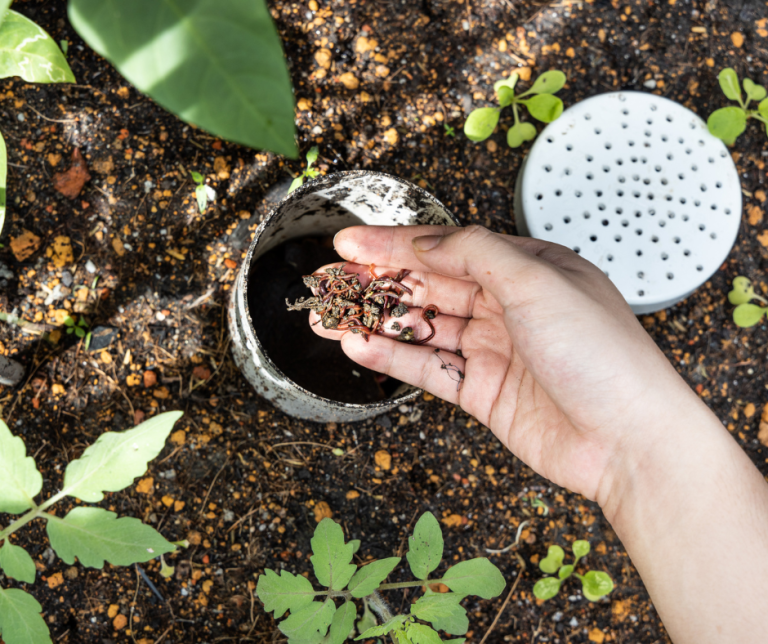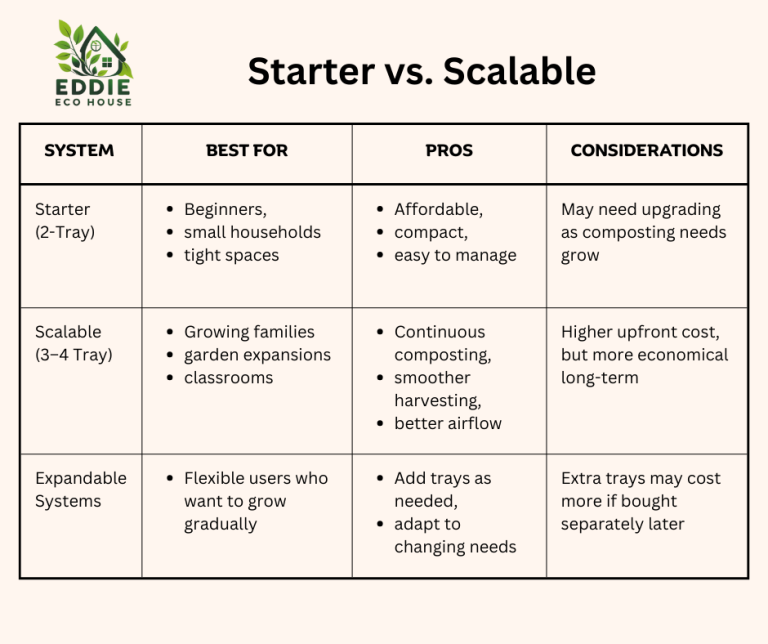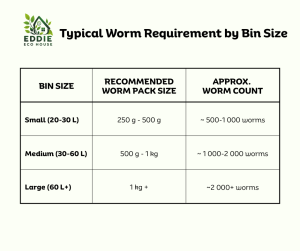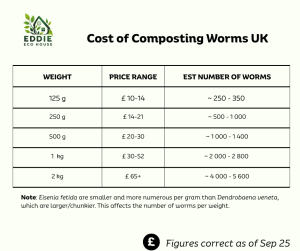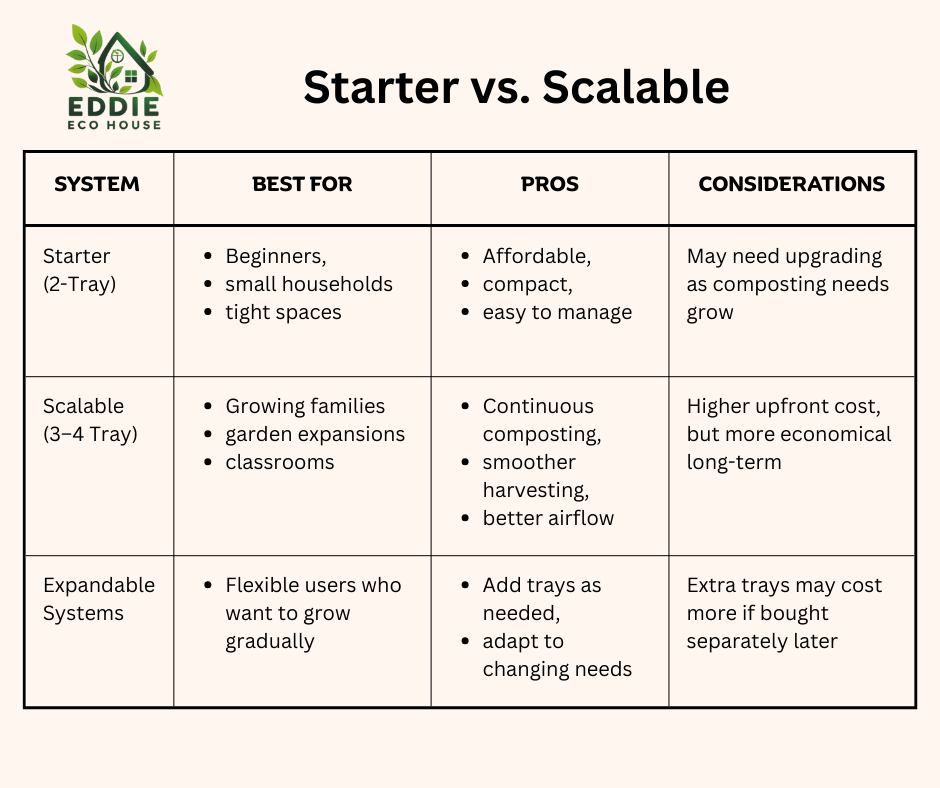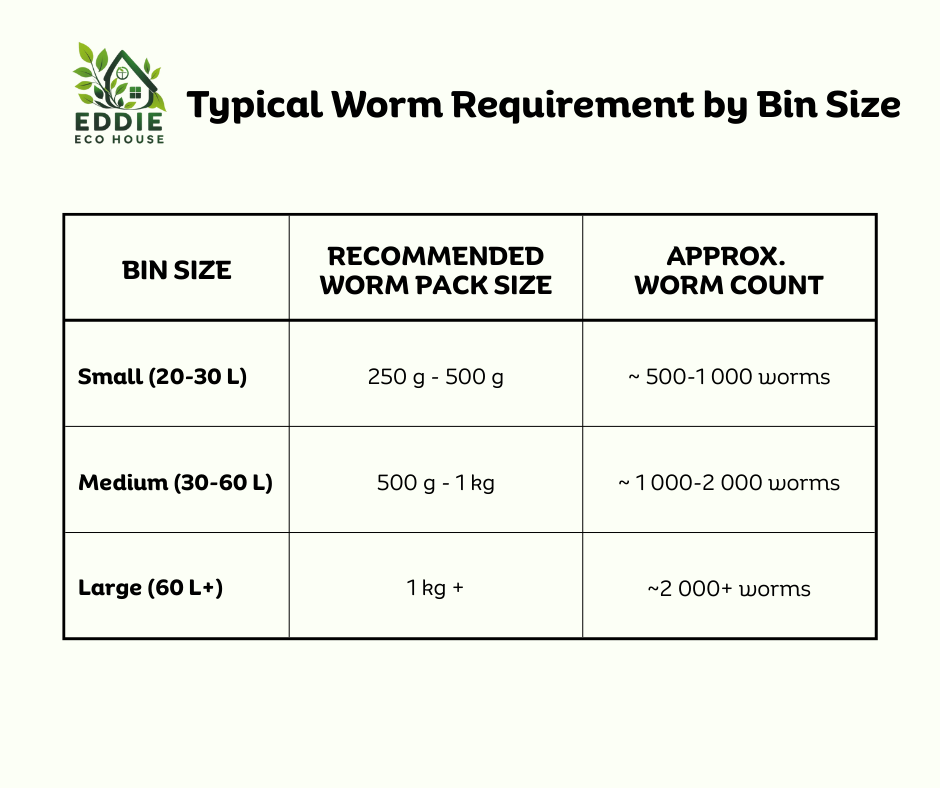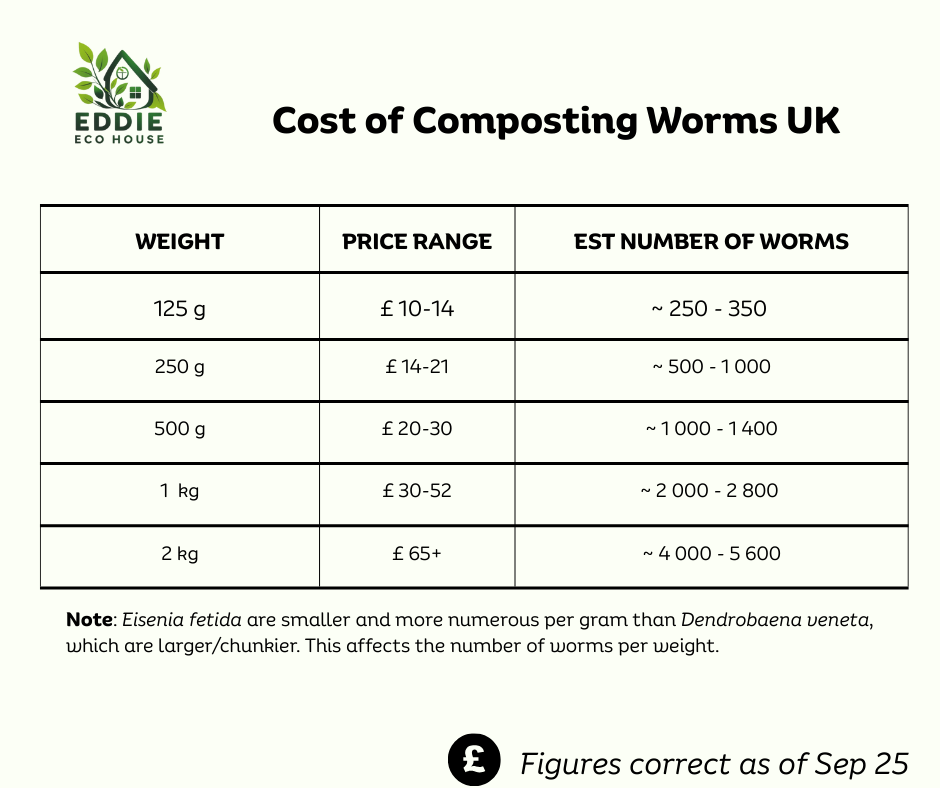Vermicomposting Setup Costs – Bins, Worms & Bedding
Section 2 of the Vermicomposting: Complete Guide

L.J.
Environmental Advocate
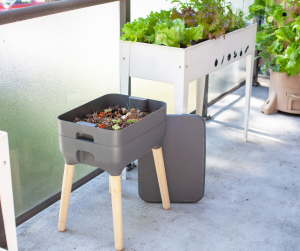
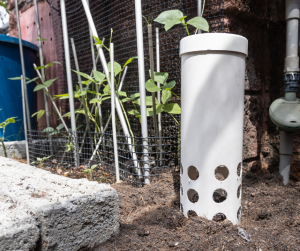
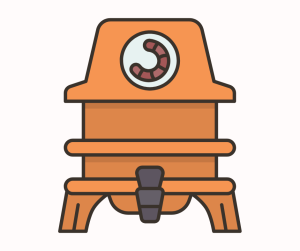
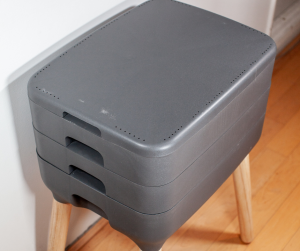
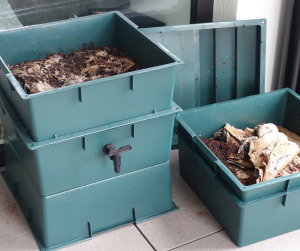
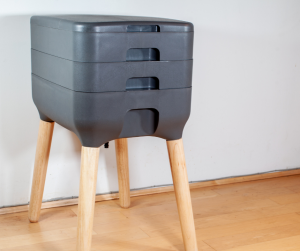
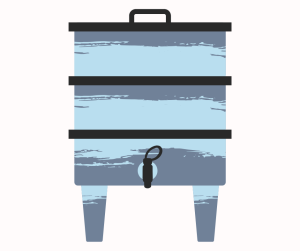
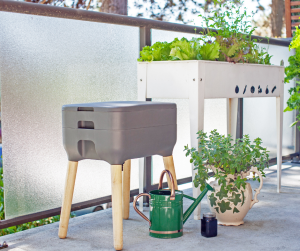
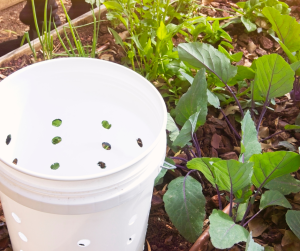
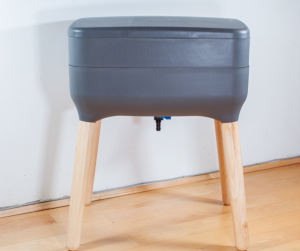
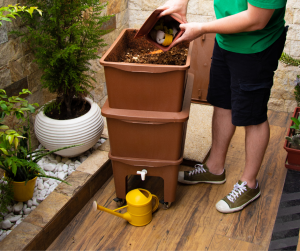
Contents
📋 Vermicomposting: Where to Start
This section explains the essentials you’ll need to start vermicomposting — including your bin, bedding, and worms — with options to suit different budgets and DIY styles
Affiliate Disclosure: This guide contains affiliate links, which means I may earn a small commission if you make a purchase—at no extra cost to you. I only recommend products I truly believe in or have thoroughly vetted.
What Do You Need?
For simplicity, we’ll refer to your setup as a worm bin throughout this guide.
Materials required:
- Worm Bin- Ready-made vermicompost system or upcycled DIY approach.
- Earthworms- Eisenia fetida or Dendrobaena veneta.
- Bedding- Creating a comfortable worm habitat, using shredded paper, cardboard, coco coir or aged compost.
- Organic waste- Mainly food scraps like fruit and veg peelings, and coffee grounds.
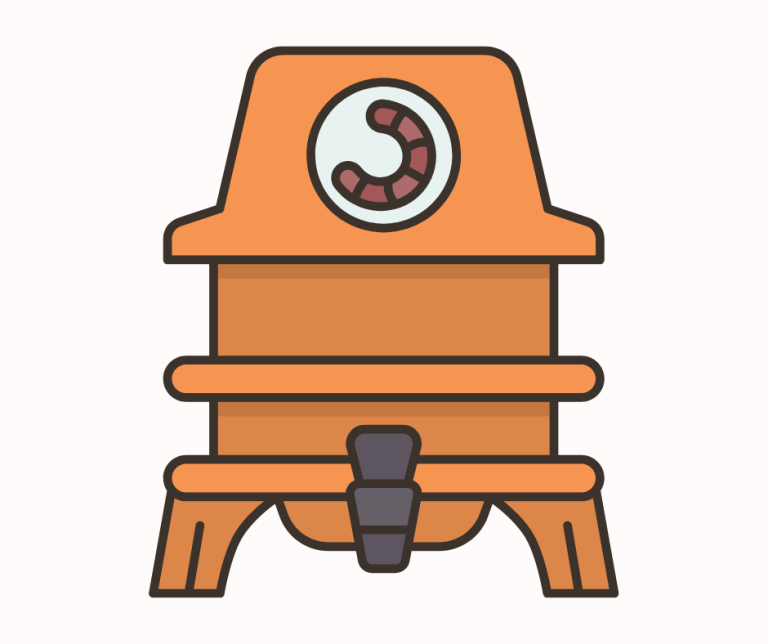
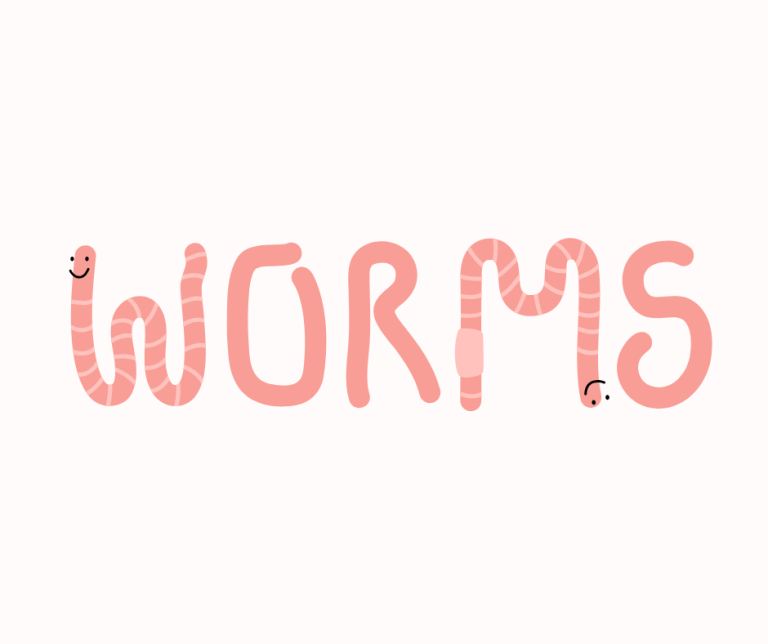
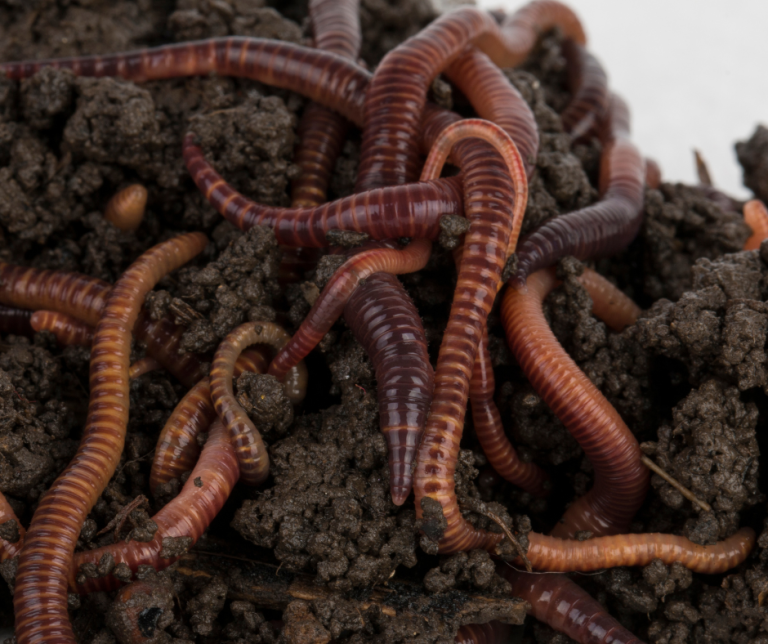
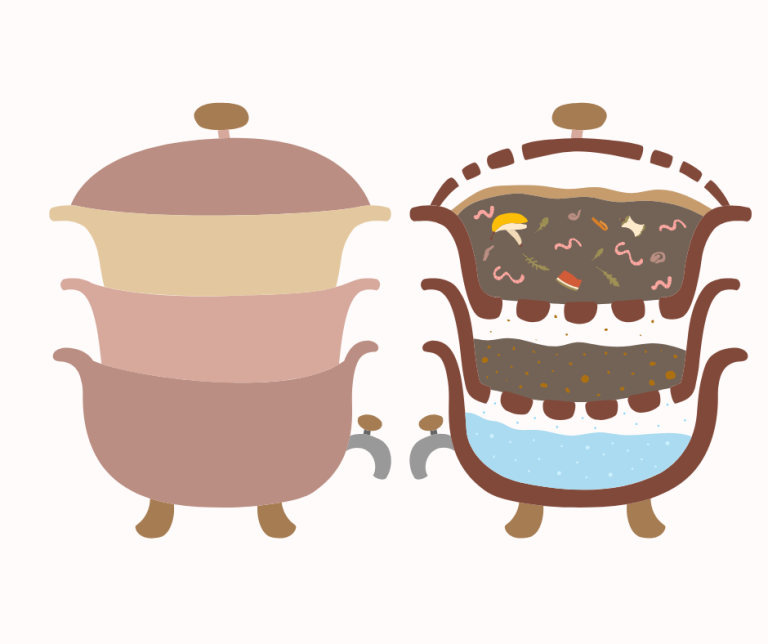
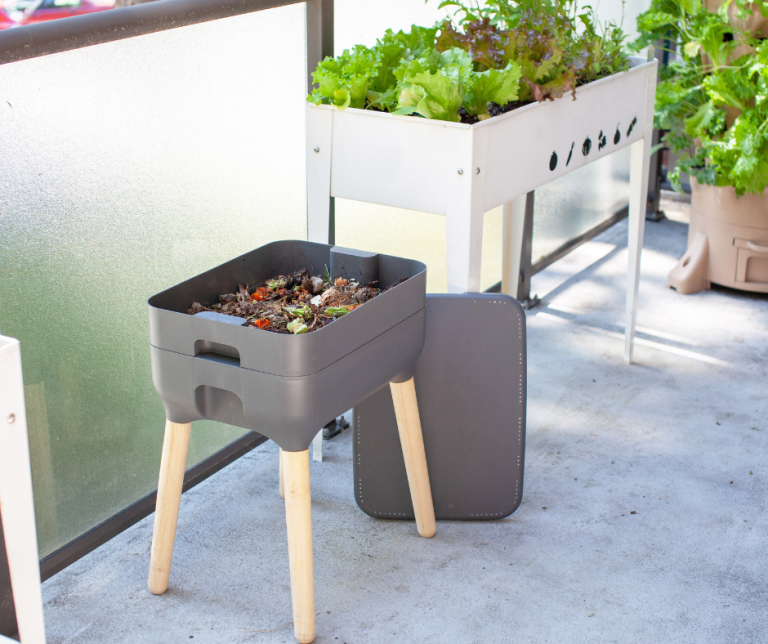
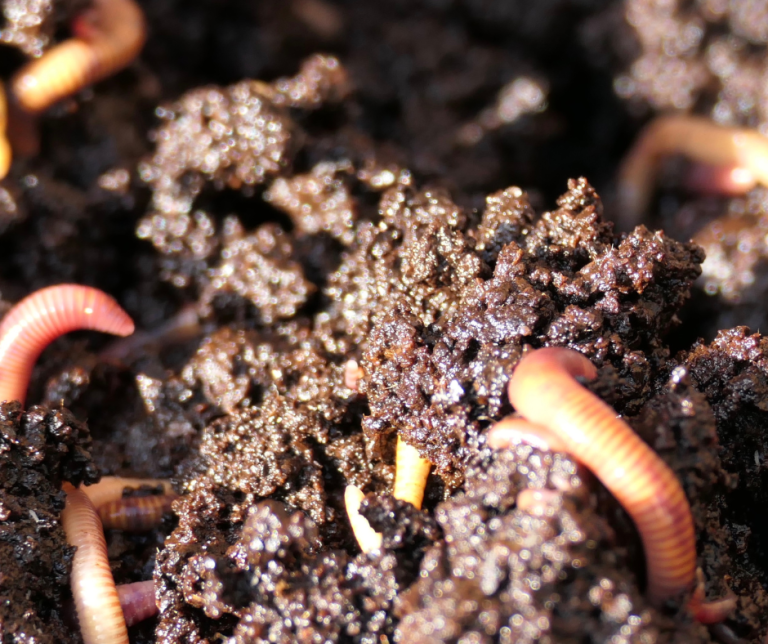

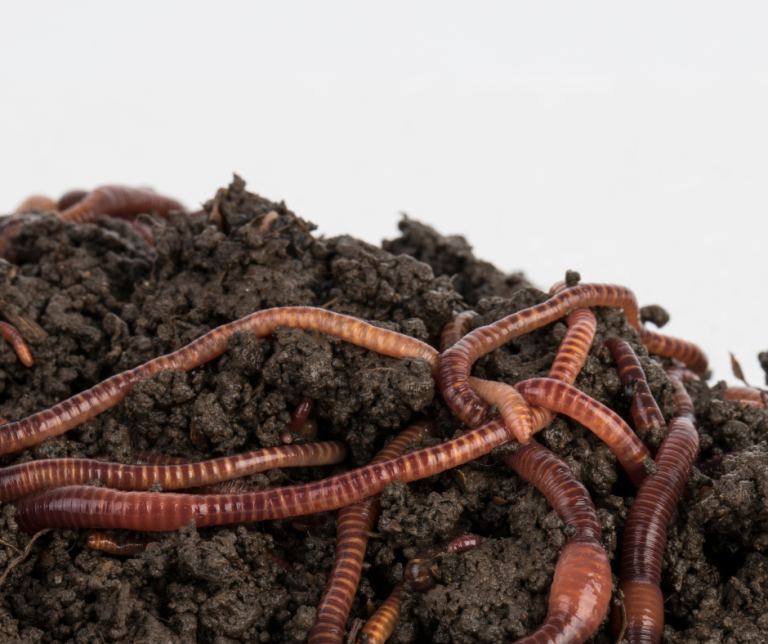
💰 Vermicomposting Setup Costs
Starting a vermicomposting system doesn’t have to be expensive—but it helps to know where your money’s going. Whether you’re building your own bin from upcycled materials or investing in a ready-made wormery, setup costs can vary widely. This section breaks down the typical expenses for bins, bedding, worms, and optional extras, so you can choose a system that suits your budget and composting goals.
🪱 Worm Bins
Two Main Vermicompost System Types
When choosing a vermicompost system, you will typically come across two styles:
- In-Ground Systems
These are smaller containers, buried directly into garden beds or soil. They are low-maintenance, blend into the background, and allow native worms to move between the bin and the surrounding soil.
- Multiple Tray Systems
These sit above ground and use stackable trays to separate fresh waste from finished compost. Ideal for harvesting worm castings, managing food input, and scaling up over time.
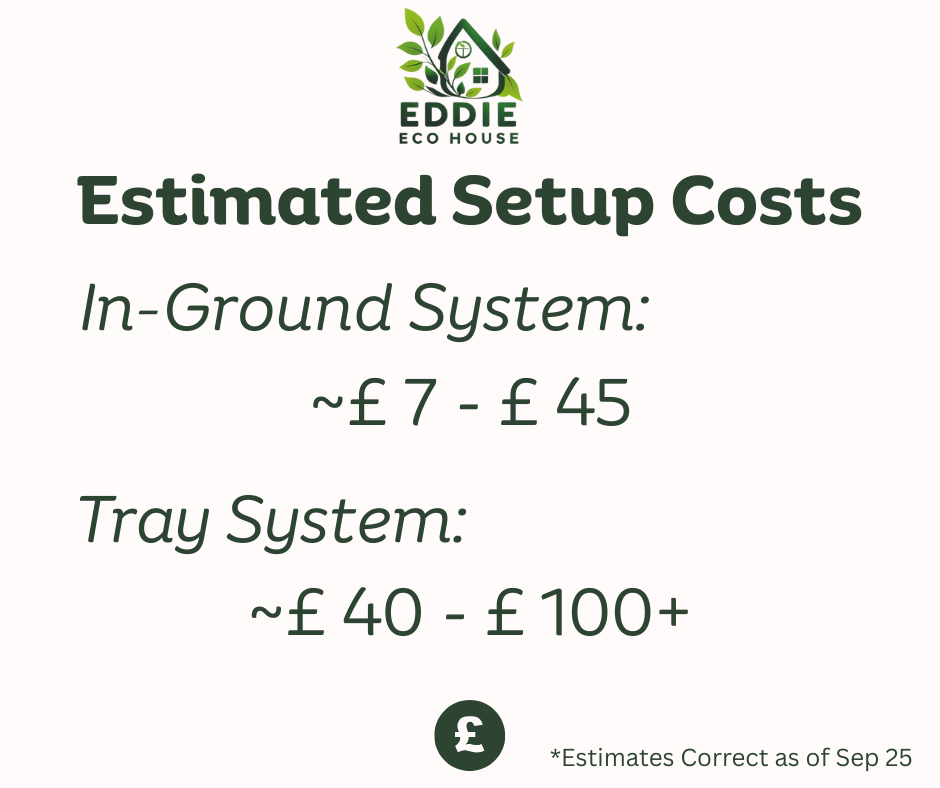
🛒 Worm Bin Costs: What to Expect
Your system costs mainly depend on:
- System Size
Larger systems with multiple trays or greater capacity cost more.
- System Type
- Ready-Made Systems: Prices vary by brand, style, and included features.
- DIY approach: Often more affordable – especially if you can upcycle items meant for disposal.
Choosing the Right Size Worm Bin
The ideal size of your worm bin system depends on:
- Amount of Food Waste
- Available Space
1. Amount of Food Waste
To choose the right vermicomposting system, start by estimating how much food waste your household produces each week.
- Average per person: ~200g per day
- That’s roughly 1.35 kg per person per week
Our table uses these averages to estimate weekly food waste for different household sizes.
Figures are based on UK data from WRAP (2023) and WasteManaged UK (2024).
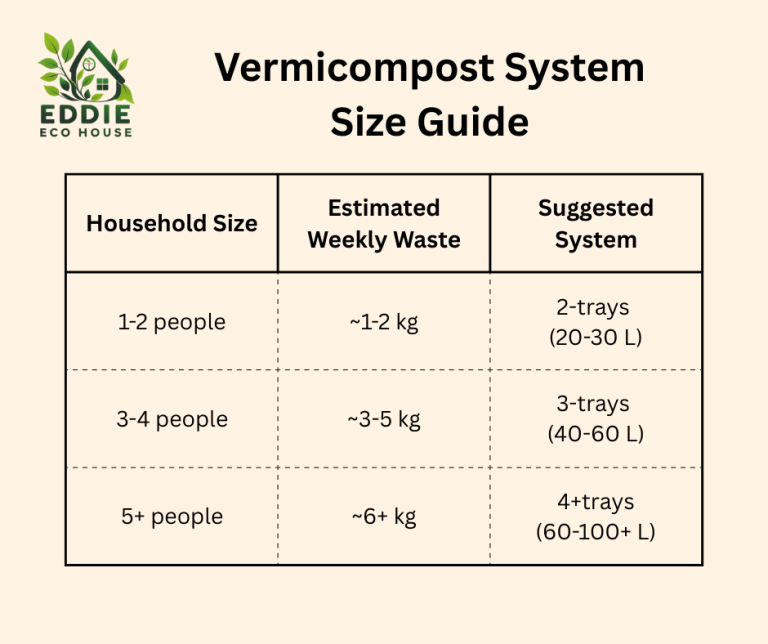

2. Available Space
Before picking your worm bin, consider where it will live.
Indoor:
- Ideal for compact systems (20-30 L).
- Look for odour-control features and drainage taps.
- Suitable places: under sinks, in utility rooms, or sheltered balconies.
Outdoor:
- Ideal for larger systems (40-100 L).
- Look for weather-resistance and elevation or drainage collectors.
- Suitable places: gardens, sheds, or patios.
- If you store your worm bin outdoors, it’s crucial to protect your worms from freezing temperatures.
In-Ground Systems
If you’re unsure about worm composting systems or only produce a small amount of food waste, an in-ground worm composter could be a simple, low-maintenance solution.
These systems are discretely buried directly in your garden soil, are odour-free, and allow native earthworms to come and go naturally—no need to purchase composting worms.
They’re ideal for raised beds, wildlife-friendly gardens, and anyone looking for a fuss-free way to recycle kitchen scraps and improve soil health.
Interested in an in-ground vermicompost system?
You’ve got two great options:
- Buy a purpose-built system – These are designed for easy installation and minimal maintenance.
- Try a DIY approach – If you have lidded buckets or PVC pipe, you can drill ventilation and access holes and repurpose them into simple, effective worm composters.
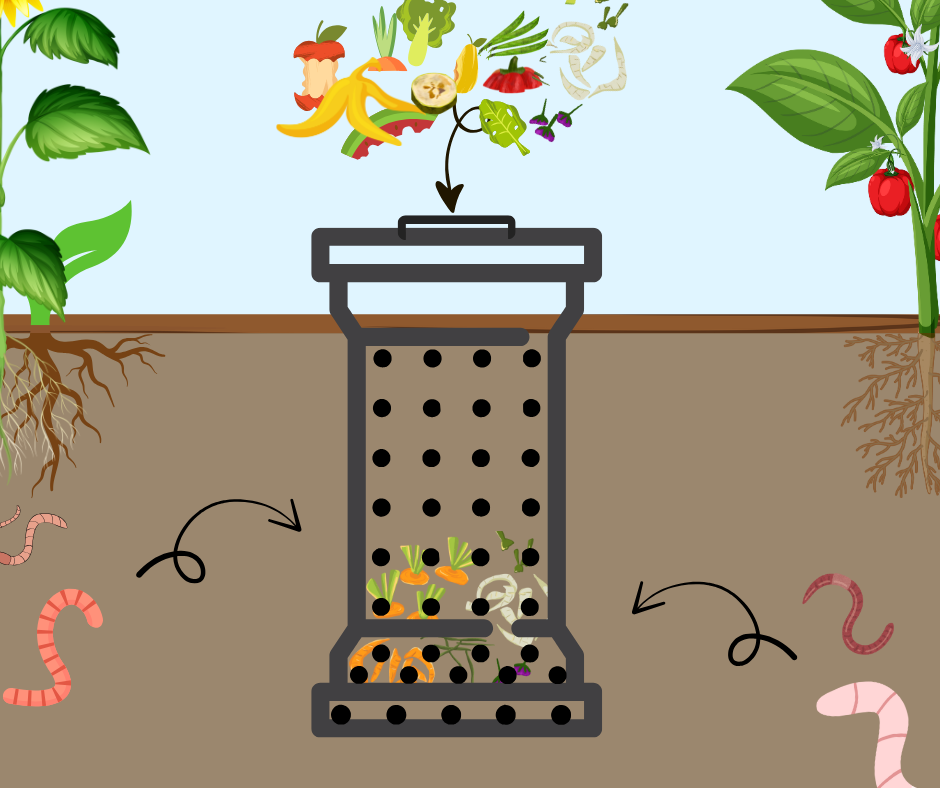
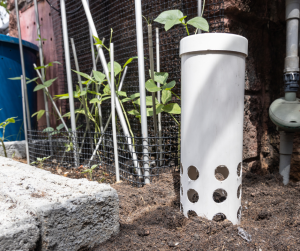
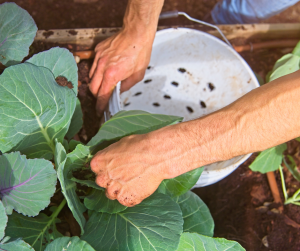
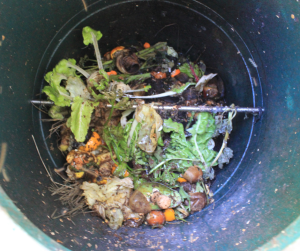
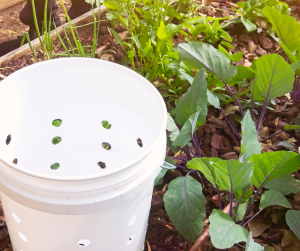
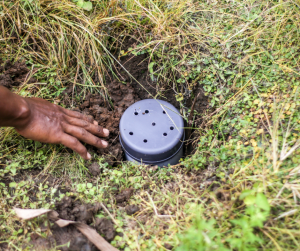
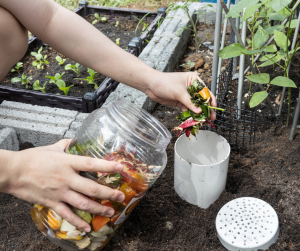
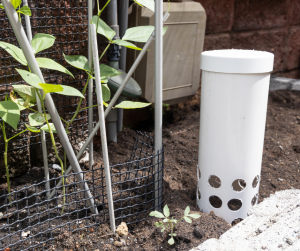
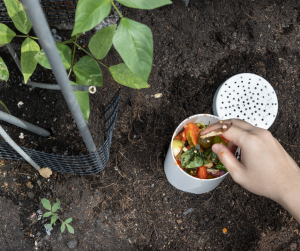
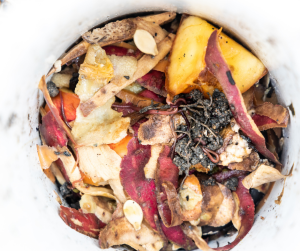
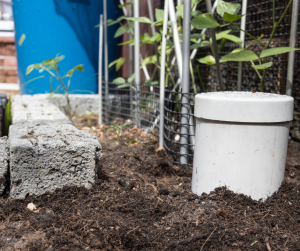
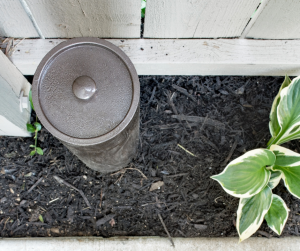
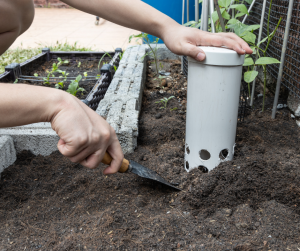
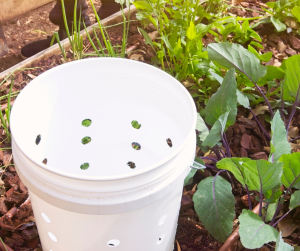
Purpose-Built In-Ground System
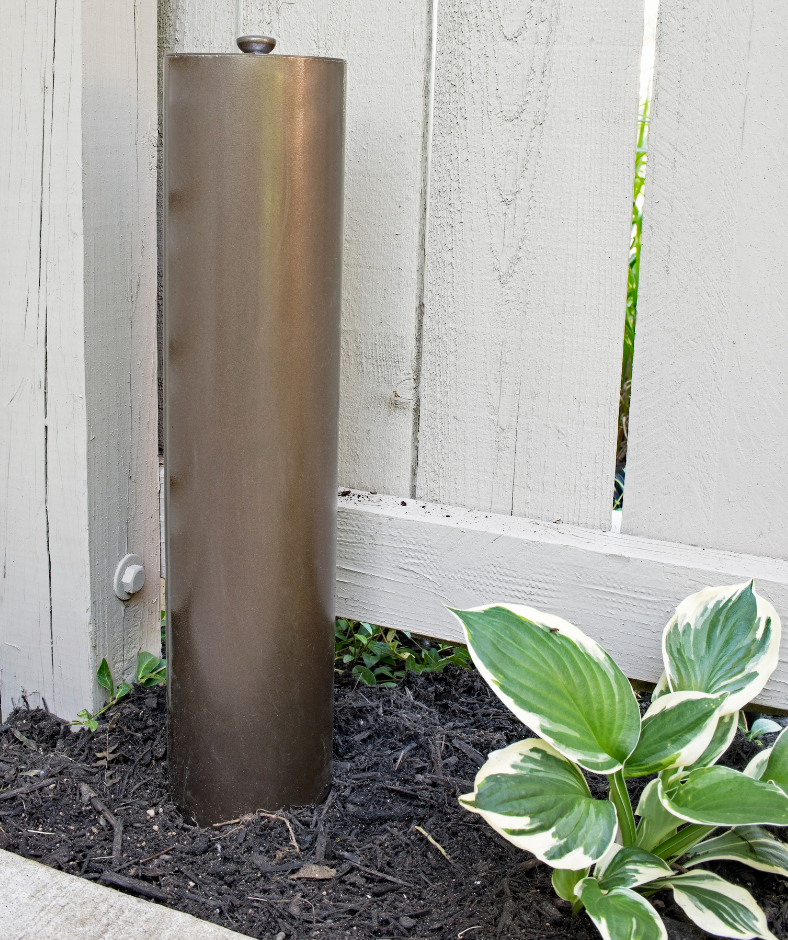
🛒 Purpose-Built In-Ground Systems
A range of in-ground worm composters are available in different sizes, ready to be placed directly into your garden beds. These systems offer a simple, low-maintenance way to recycle kitchen scraps and enrich your soil—no trays, no fuss. Costs range from £7 to £45, depending on the size and capacity of the system.
Recommended Options
Below is a list of options you may wish to explore.
Small In-Ground Vermicomposting Container with Lid, 7.5 cm x 7.5 cm x 21 cm. ~1L capacity. ~ £ 7-10
Wormacotta In Ground ,1L Terracotta Worm composter
to bury (~£ 40-45)
Tumbleweed Worm Buffet ~ £ 40
DIY Approach for In-Ground System
DIY Approach In-Ground Systems:
Using lidded buckets:
- Repurpose a bucket with a secure lid.
- Drill (¼ inch/6 mm) holes in the sides and base for airflow and worm access.
- Optional: Add some holes near the top of the bucket sides for additional ventilation.
- Bury the bucket halfway into garden soil.
- Add food scraps and bedding materials.
- Keep the lid on to deter pests and retain moisture.
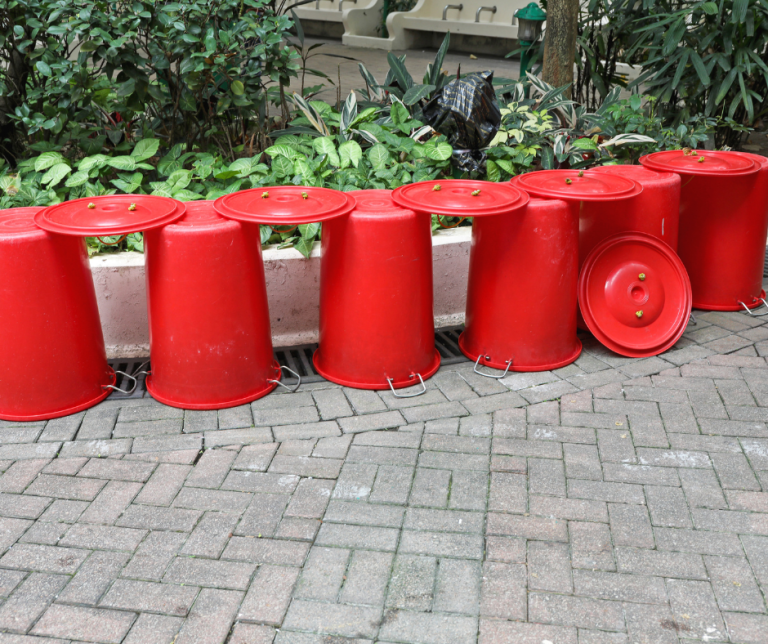

DIY Approach In-Ground Systems:
Using PVC Pipe (10-15 cm diameter, ~30-50 cm long):
- Drill (¼ inch/6 mm) holes around lower half of the pipe for airflow and worm access.
- Bury the pipe vertically in garden soil, leaving the top exposed.
- Add food scraps and bedding materials.
- Cover with lid or flat stone to keep pests our and moisture in.
PVC Safety
✅ When PVC Is Acceptable
- For in-ground systems, PVC is generally considered safe because it doesn’t come into direct contact with food or worms long-term—just bedding and scraps inside the pipe.
- Rigid, uncoated PVC is preferable. Avoid flexible PVC or pipes with chemical coatings or treatments.
- Use food-safe or potable-grade PVC if available (often labelled for water supply use).
Things To Watch Out For
⚠️ Things to Watch Out For
• Drilling safety: Sand edges after drilling to avoid sharp fragments.
• End-of-life disposal: PVC isn’t biodegradable, so consider longevity and reuse options.
♻️ Alternatives to PVC for In-Ground Worm Systems
If you’re looking for low-impact or natural materials, these alternatives offer worm-safe, breathable options—ideal for eco-conscious setups or school-friendly projects.
🏺 Terracotta Chimney Pots or Clay Drainage Pipes
- Pros: Breathable, durable, naturally regulates moisture
- Cons: Heavier, may crack in frost-prone areas
- Best for: Permanent installations in gardens or raised beds
🌲 Untreated Wooden Tubes or Posts (Lined with Fabric)
- Pros: Natural, compostable, blends into garden aesthetics
- Cons: Prone to rot over time unless elevated or lined
- Best for: Short- to medium-term use in well-drained soil
📦 Heavy-Duty Cardboard Tubes
- Pros: Compostable, easy to source, great for seasonal systems
- Cons: Breaks down quickly, not suitable for wet or compacted soil
- Best for: Temporary feeding stations or school garden projects
🔧 Curious about setup? Explore our post on Installing In-Ground Vermicomposters—from digging depth to lid options.

Tray Systems Ahead…
From here on, we’ll be diving into the details of tray-style wormeries.
If you’ve chosen to go with an in-ground system, you’re ready to get started—no need to read further unless you fancy exploring other options.
🗄️ Multi-Tray Systems
Why Choose a Multi-Tray System? If you’re new to vermicomposting or looking to scale up, multi-tray wormeries offer a smart solution. These stackable bins allow worms to move between layers as they finish processing food, making it easier to collect castings without disturbing your colony. They’re ideal for households that want a tidy, modular setup with minimal mess.
⚒️ DIY Upcycled Worm Bin
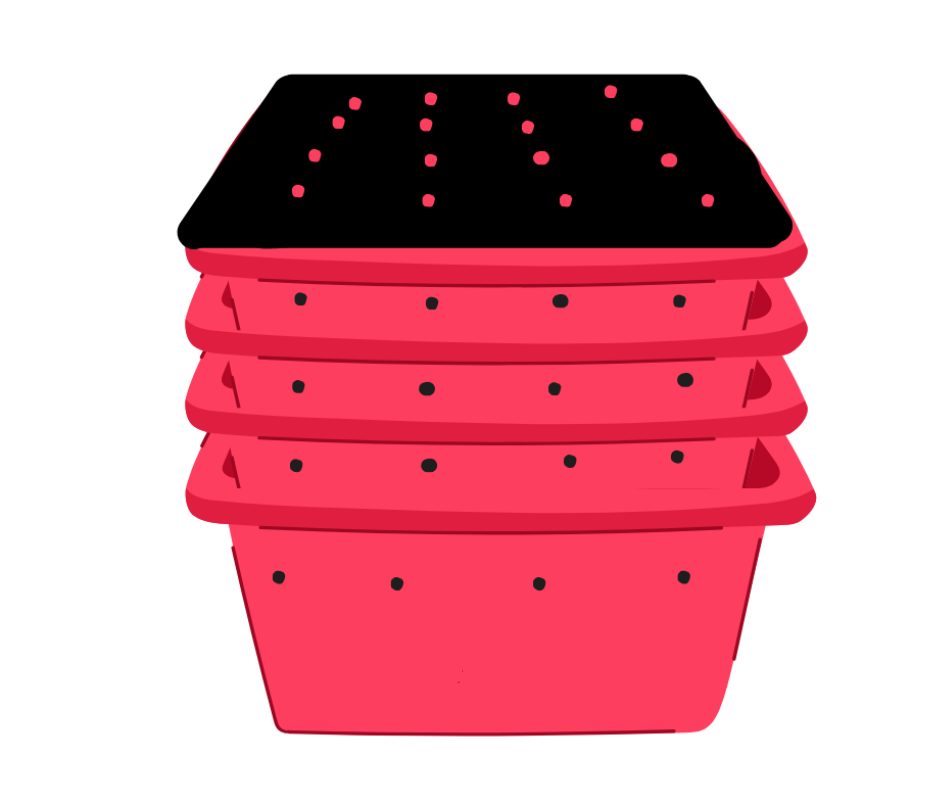
Composting with What You Have
You don’t need a fancy setup to start vermicomposting—creativity and resourcefulness go a long way.
With just a few simple tweaks—like adding ventilation, drainage, and light-blocking layers—everyday items such as buckets, crates, hampers, and storage tubs can be transformed into highly effective worm bins.
🔧 For a full breakdown of container options, setup tips, and creative upcycling ideas, head to Section 3: DIY Worm Bin Guide.
🪱 Note: You’ll still need to source suitable bedding and composting worms—so it’s worth continuing through the remaining sections to get your bin fully prepped and worm-ready.
🛒 Purpose-Built Ready-Made Options
If DIY isn’t your style—or you simply want a faster setup—there are plenty of purpose-built worm bins designed for convenience, airflow, and easy harvesting. From stackable trays to compact indoor models, these systems take the guesswork out of vermicomposting and often come with starter bedding or worms included.
Whether you’re short on time, space, or tools, ready-made options can be a great way to get started with minimal fuss.
Comparing Wormery Systems: 📈 Start Small or Scale Up?
Choosing the right wormery depends on your space, budget, and long-term goals. Whether you’re just starting out or planning to expand, here’s a quick comparison to help you weigh the pros and cons of starter vs scalable systems.
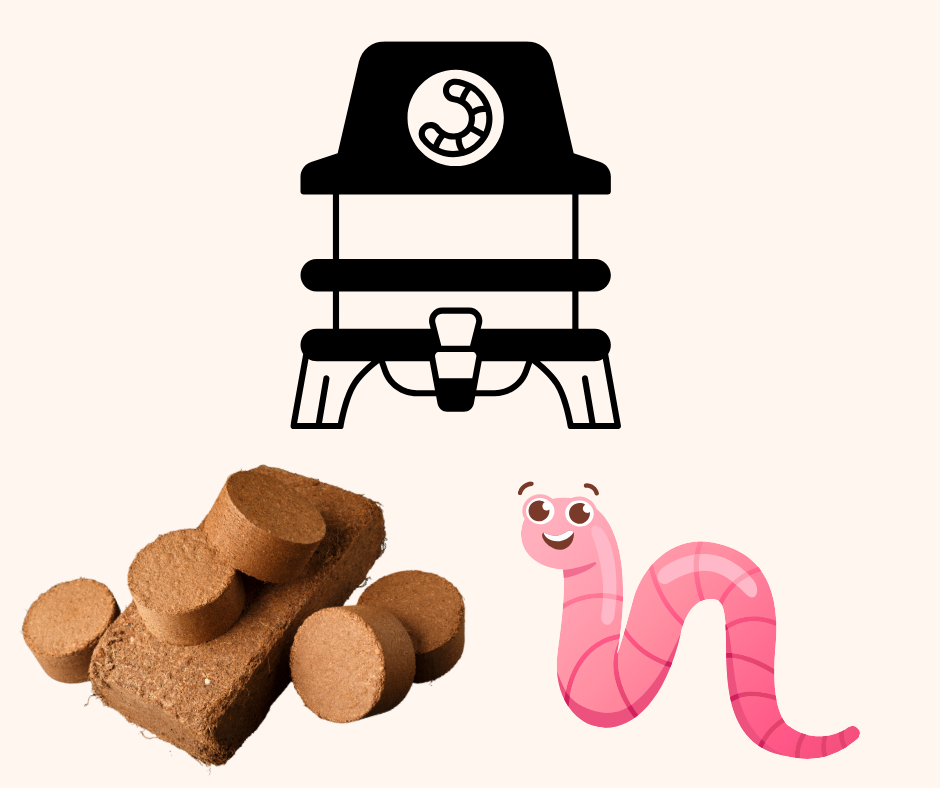
🔦 Starter Kit Spotlight
Want to skip the guesswork and get composting straight away? These all-in-one kits take care of the setup for you—no need to source each component separately.
✅ Worms
✅ Bedding
✅ Bin
✅ Instructions
Recommended Kits
- The UK Made- Wormcity Wormery 100 L capacity has 4 trays and includes 500 g of live worms, coir bedding, and worm food.
- Wiggly Urbalive Worm Composter 20 L + Worms + Bedding + Worm Food + Lime + Moisture Mat
Starter Systems
Begin with a compact setup that’s perfect for small spaces and first-time composters.
Short on space but big on sustainability? A 2-tray worm bin is a compact composting hero.
- Top tray (1): Where worms feast on fresh scraps.
- Bottom tray (2): Where nutrient-rich castings and liquid gold (leachate) collect.
- Sump Tray/Collector: Where leachate or “worm tea” collects for easy drainage.
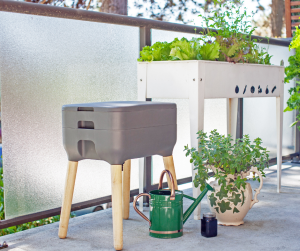
Recommended Suppliers:
🛒 Compact Vermicomposters to Consider
💡 Compact & Practical
Essential Living Composter – ~30L Capacity
- 2-tray system with good airflow
- Built-in drainage spigot
- Space-saving design for small homes or flats
- Budget-conscious without compromising function
- Price Range: £50-80
📦 Generous Capacity on a Budget
Simpa Worm Farm Compost Bin – 55L Capacity
- 2-tray setup with drainage tray
- Larger volume for households with more food waste
- Affordable and compact for patios, sheds, or utility area
- Approx. £40
Expandable System
Start small and scale up—these modular worm bins grow with your composting needs, making them ideal for evolving households, schools, or garden projects.




Start small, grow big
- Ideal for beginners who want to test the waters before committing to a larger setup.
- Modular design – Stackable trays or add-on layers make it easy to increase capacity without starting from scratch.
- Compatible with upgrades – Many systems allow for airflow inserts, leachate trays, or insulation add-ons.
Recommended Supplier:
🛒 Expandable Vermicomposter to Consider
🌿Stylish & Versatile
Wiggly Urbalive Worm Composter Wormery – 20 Litre
- Sleek, modern design for indoor/outdoor use
- Stackable trays + collector tray for worm tea
- Secure lid and clean aesthetic
- Available in stone grey or cream for different tones
- Approx. £150
Additional trays can be purchased separately to expand the system to suit any growing composting needs.
Scalable Systems
Grow your system over time with modular designs that expand as your composting needs evolve.
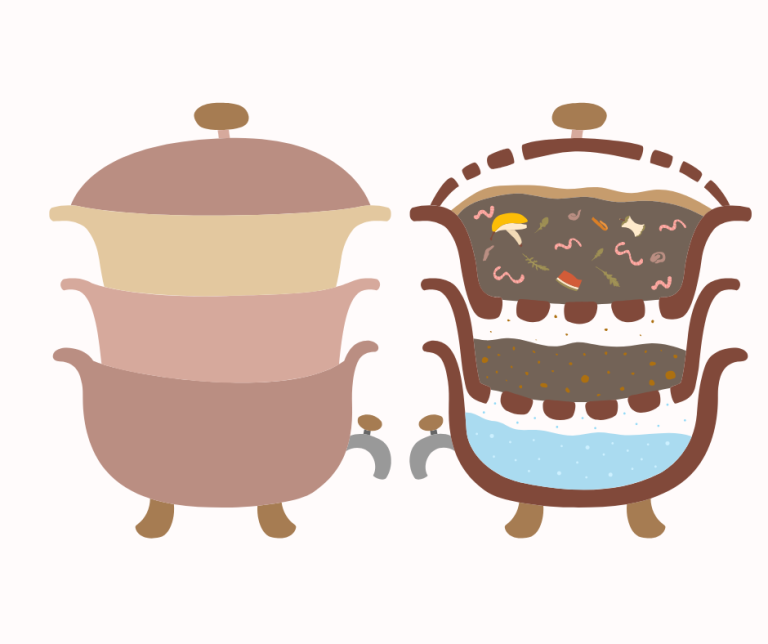
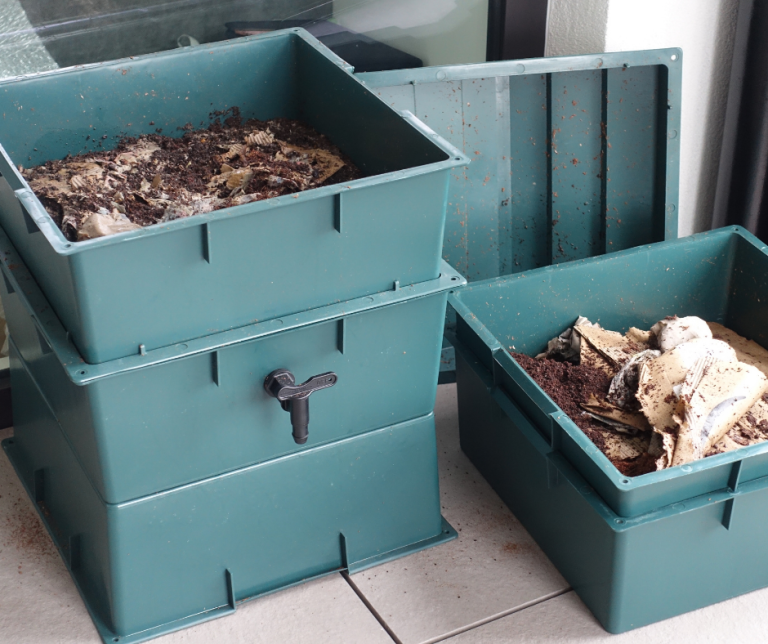


Ready to Start with a Larger System? Go Big with a Multi-Tray Wormery!
If you’re producing regular food scraps or want a smoother composting cycle, a larger worm bin with 3 or more trays offers serious benefits:
- Continuous composting: Feed in the top tray while lower trays mature.
- Effortless harvesting: Worms migrate upward, leaving castings behind.
- Compact scalability: More volume, same footprint—ideal for patios, sheds, or under-sink setups.
Multi-tray systems are perfect for households, classrooms, or anyone wanting a low-maintenance, high-yield composting routine.
Recommended Suppliers:
🛒 Larger Wormeries to Consider
💰 vidaXL Worm Factory
4-Tray Stackable System
- Budget-friendly with 64 L capacity
- Durable HDPE construction
- Includes liquid fertiliser spigot
- Ideal for beginners wanting more volume
- Approx. £82.99
🐯 Tiger Wormery
2, 3, or 4 Stackable Tray Systems
- Designed and made in the UK
- Stackable trays with drainage sump and tap
- Optional starter kit with live worms and bedding
- Available in multiple colours and sizes
- Approx. £90–£150
🧪 Wormcity Wormery
4-Tray Starter Kit
- UK-made with 100 L capacity
- Includes 500g live worms, coir bedding, and worm food
- Strong square base with excellent airflow
- Complete kit for serious composting
- Approx. £100
🌱 Next Up: Composting Worms & Bedding
To kickstart your vermicomposter, you’ll need the right worms and a comfy bedding mix. This section covers how to choose, source, and set up both—so your worm crew can settle in and start munching.
🔦 Starter Kit Spotlight
Choosing your worm bin separately or planning a DIY setup?
You don’t need to buy a full starter kit — you can purchase worm and bedding bundles instead. These are ideal if you’re building your own bin or sourcing components individually.
Options include:
✅ Composting worms
✅ Bedding materials (coir, shredded paper, or pre-mixed blends)
✅ Optional lime mix or pH buffer
✅ Setup instructions (in some kits)
Recommended Kits
- Wormcity: Starter kit that includes worms, worm food, and bedding. (~£25-£40).
- Yorkshire Worms: Wormery Starter Pack- containing 500g of Dendrobaena veneta, coir (bedding), and feed.(~£30)
- Wiggly Wigglers:
- Worms Direct: Worm and Bedding Mix. (~£35-£50)
- Original Organics: Basic Wormery Starter Kit, containing 250 g worms, coco coir and lime mix. (~£20)
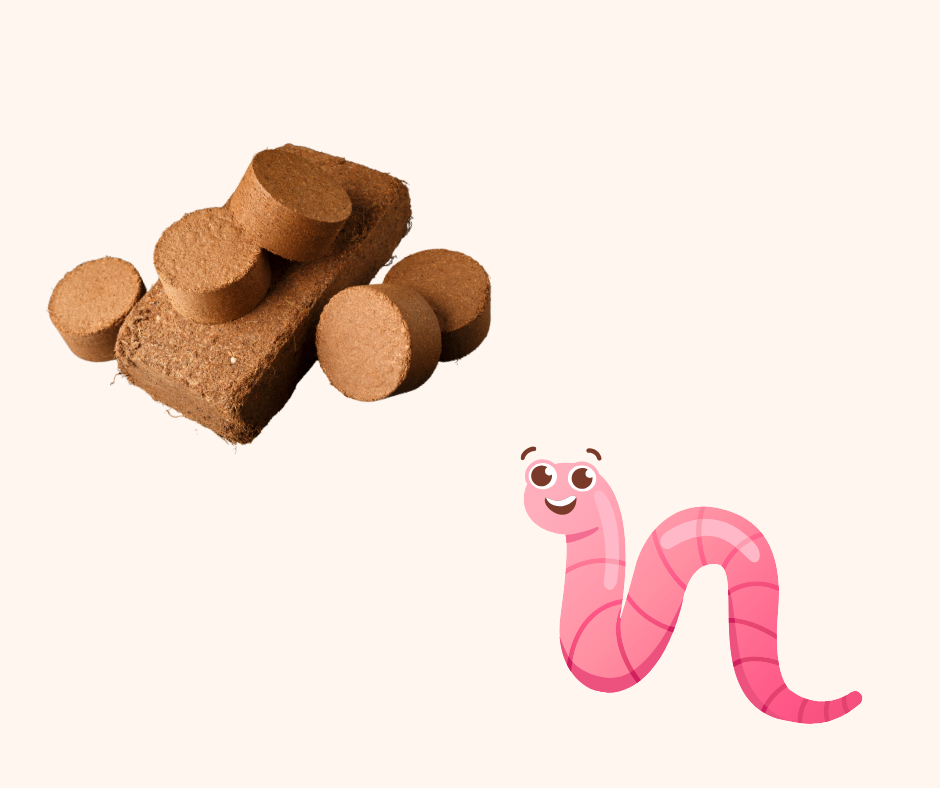
🪱 Earthworm Costs
Composting worms are sold by weight—usually 250g to 1kg—and prices vary based on species, quantity, and supplier. Some packs include bedding or starter kits, which can affect the overall cost.
🪱Composting Worm Species
Composting worms are the engine of any vermicomposting system.
Species like Eisenia fetida and Dendrobaena veneta thrive in bins, breaking down food waste into nutrient-rich castings. They’re fast, efficient, and easy to manage—making them ideal for home composting in the UK.
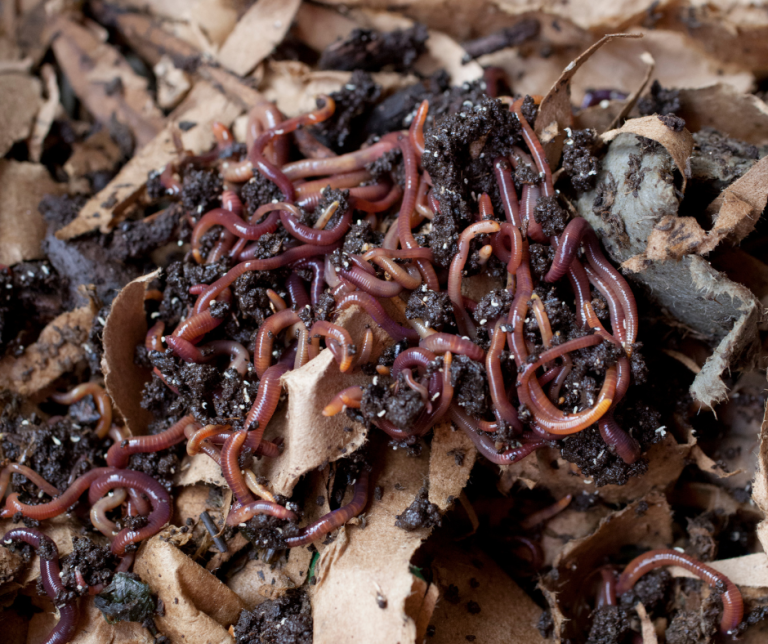
A quick comparison:
Eisenia fetida
- Common Names: Red Wigglers, Tiger Worm, Brandling Worm.
- Traits: Small, fast breeders; ideal for indoor shallow bins
Eisenia andrei
- Common Name: Red Tiger Worm, Nightcrawler (sometimes confused)
- Traits: Similar in appearance and behaviour to Eisenia fetida but genetically distinct; thrives in warm, moist conditions and is also suitable for indoor bins.
Dendrobaena veneta, also known as Eisenia hortensis
- Common Names: Tiger Worm, European Nightcrawler
- Traits: Larger, slower breeders; ideal for outdoor bins
📖 Want to Learn More About Your Worms?
Section 4 of the Vermicomposting Guide explores everything you need to know about your composting crew.
🪱 How Many Worms Do You Need?
Choosing the right number of composting worms depends on your bin size, feeding habits, and setup style. Whether you’re starting with a small indoor tray or a large outdoor stackable system, matching worm quantity to bin capacity helps maintain healthy decomposition, avoid overfeeding, and support balanced moisture and airflow.
📈 It’s often best to start with fewer worms than you think—healthy composting conditions will encourage them to breed and naturally increase their population over time.
➡️ This table breaks down typical worm requirements by bin size—so you can start with confidence and scale sustainably.
‼️ Best of Both
Many suppliers offer mixed-species packs that combine Eisenia fetida and Dendrobaena veneta—ideal for beginners and seasoned composters alike. A diverse worm colony helps balance moisture, temperature, and food breakdown across the bin.
Recommended Suppliers:
Where to purchase?
- Yorkshire Worms sell:
- Eisenia fetida and Dendrobaena veneta separately, and in multiple pack sizes (50 g – 2 kg). (~£9-£67)
- Wiggly Wigglers sell:
- Wormcity sell:
- mixed packs in 50 g – 1 kg (~£10-£35)
- Worms Direct sell:
- mixed packs in 250 g, 500 g, and 1 kg.(~£15-£35)
Local Options:
You may be able to find a local supplier, try asking in garden centres and nurseries, community composting groups or fishing tackle shops.
🪱 Worms: What to Consider
The cost of worms varies depending on species, quantity, and supplier—but it’s just one part of setting up your bin. To help your worms thrive from day one, it’s worth looking at the bedding materials that support their health and composting activity.
Worm Bedding Options
Setting up your worm bin isn’t just about the worms—bedding plays a vital role in keeping your composting colony healthy, active, and odour-free.
Bedding helps regulate moisture, provide aeration, and give worms a comfortable habitat in which to burrow and feed.
Choosing Your Worm Bedding
You have a few flexible options when setting up your worm bin:
- Use a pre-inoculated worm mix for a microbe-rich foundation
- Transition to alternative bedding once the bin is established and active
- Prepare DIY materials or Coco coir and inoculate them manually with essential microbes.
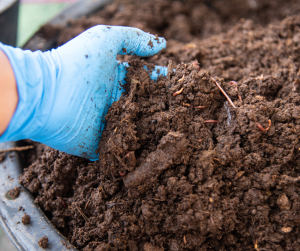
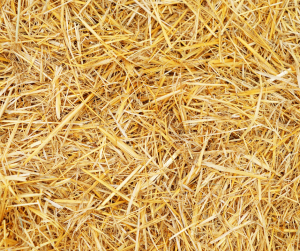
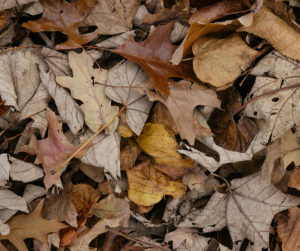

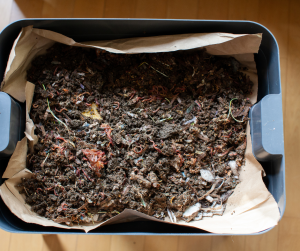
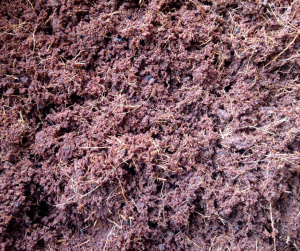
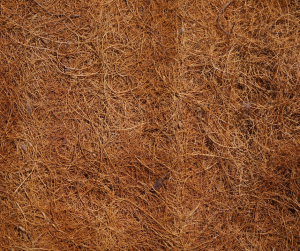
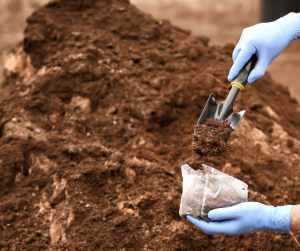

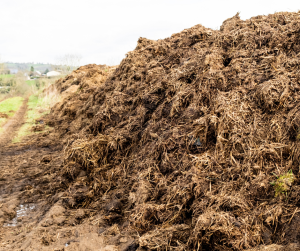
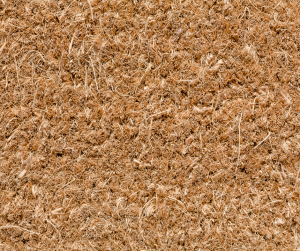
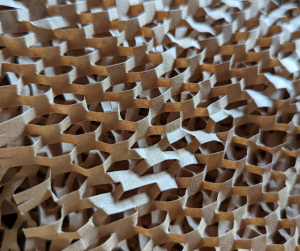

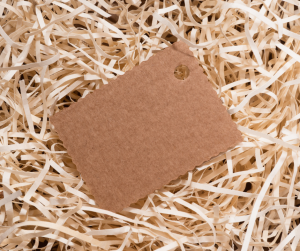
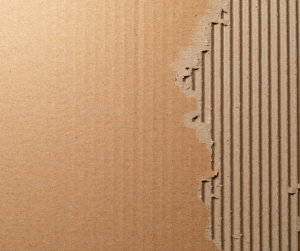
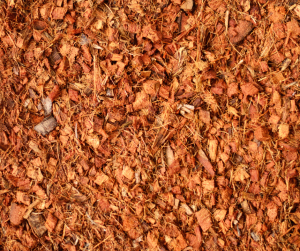

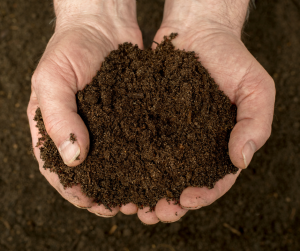
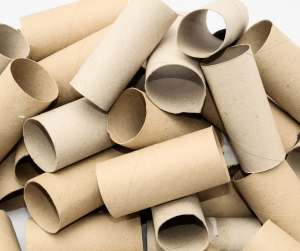
👉 Full guidance on bedding preparation and inoculation is available in Section 6: Setting Up Your Vermicomposter
🛒 Buying Bedding: What to Expect
Premium worm bedding typically costs around £ 10-15, depending on the material, volume, and supplier. Investing in quality bedding helps boost worm activity, reduce odours, and improve casting production from day one.
🧪 Specialist Worm Bedding Mixes
Specially blended for worm health and composting efficiency. These mixes are often pre-inoculated with essential microbes—check product descriptions for confirmation.
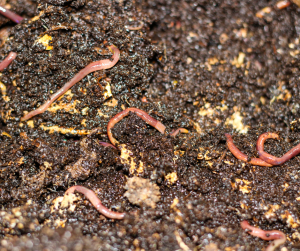





🥥 Organic coconut coir
Organic coconut coir is a clean, pH-neutral, moisture-retentive bedding that creates a soft, breathable worm habitat.
- Coir blocks– Compressed bricks that expand when soaked; great for bulk bedding
- Coir chip husk – Chunkier texture; improves airflow and structure
- Loose coir fibre – Soft and fluffy; ideal for moisture retention
Recommended Suppliers
🍀 Organic Coir Blocks
Supplier: Coco & Coir
Sizes Available: Coco Coir 9 L, Coco Coir 54 L and Coco Coir 75 L blocks.
Price Range: ~£6-£12
🥥 Coir Chip Husk
Supplier: Yorkshire Worms
Sizes Available: Coir Chip Husk blocks, single and multi-packs.
Price Range:~£10 per pack
🧑🌾 Starter Kits & DIY Setups
If you’ve purchased a starter kit, bedding is usually included.
If you’re building your bin from scratch or buying materials separately, starting with premium bedding gives your worms the best chance to thrive.
⚠️ Sustainability Note
Peat moss, once a popular bedding choice, is no longer recommended. Its extraction damages fragile ecosystems and releases stored carbon—making it an unsustainable option for eco-conscious composting.
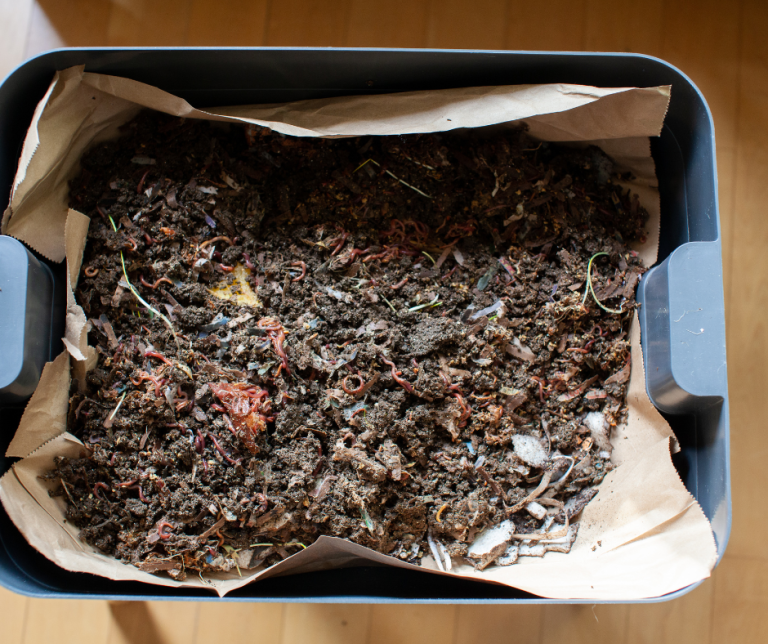
Use What You Have: Alternative Bedding Material
You don’t have to invest in premium bedding materials—you can make your own using simple, low-cost resources. These DIY options are ideal for budget-conscious composters and work well when prepared properly.
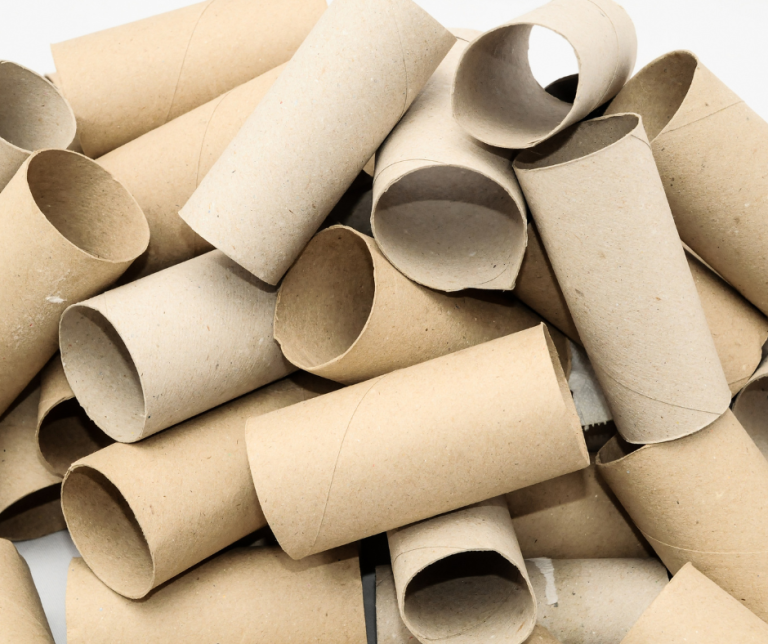
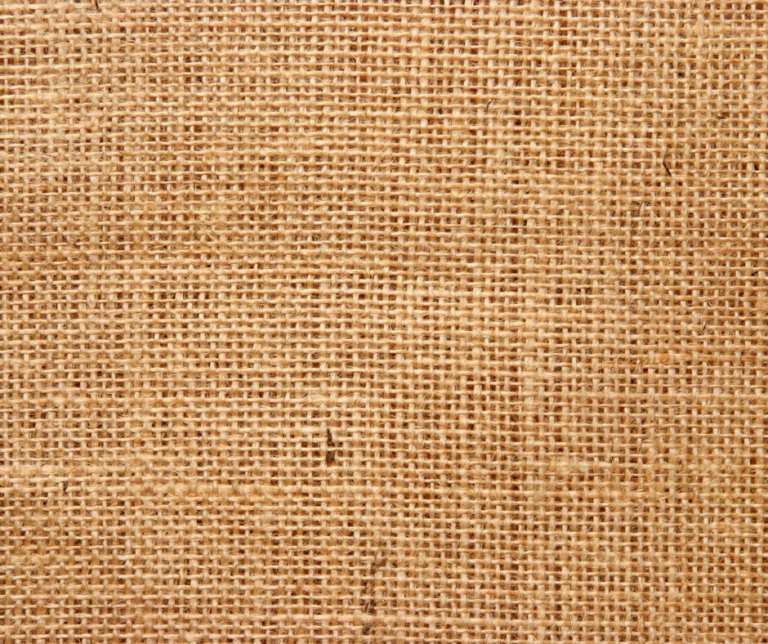
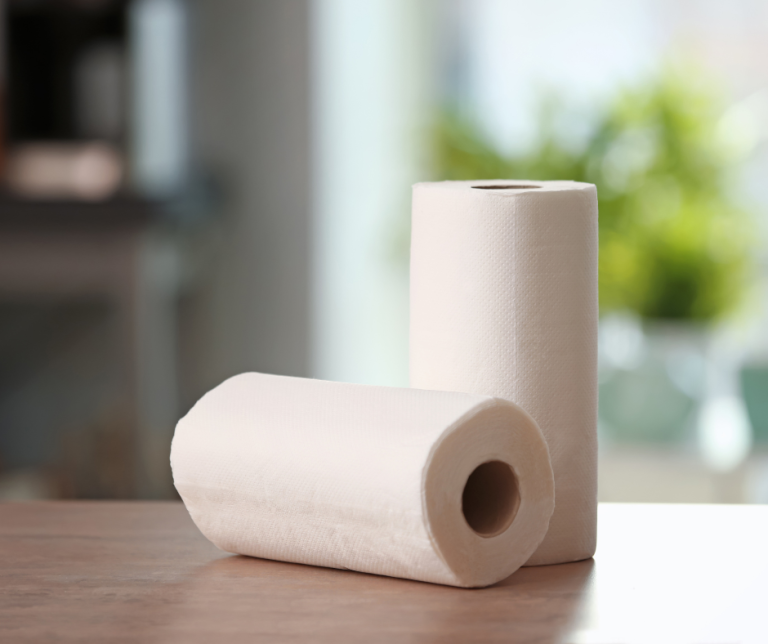
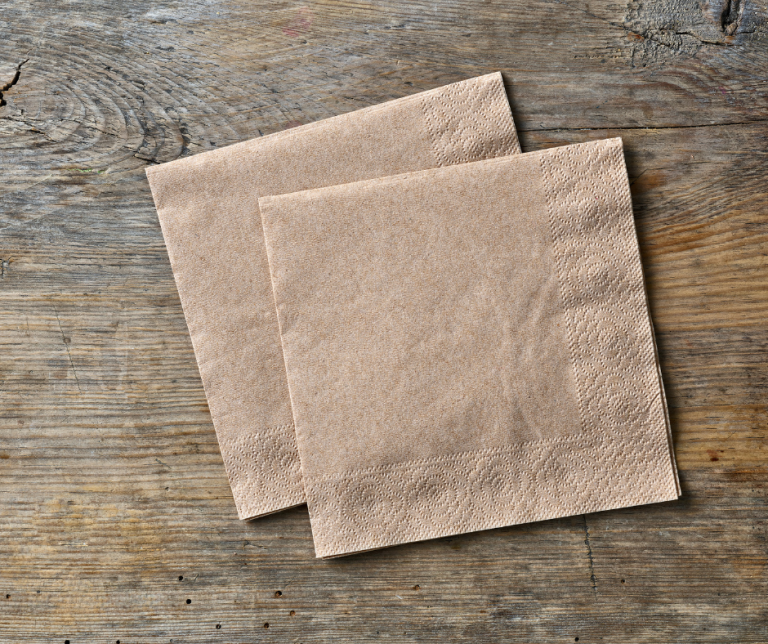



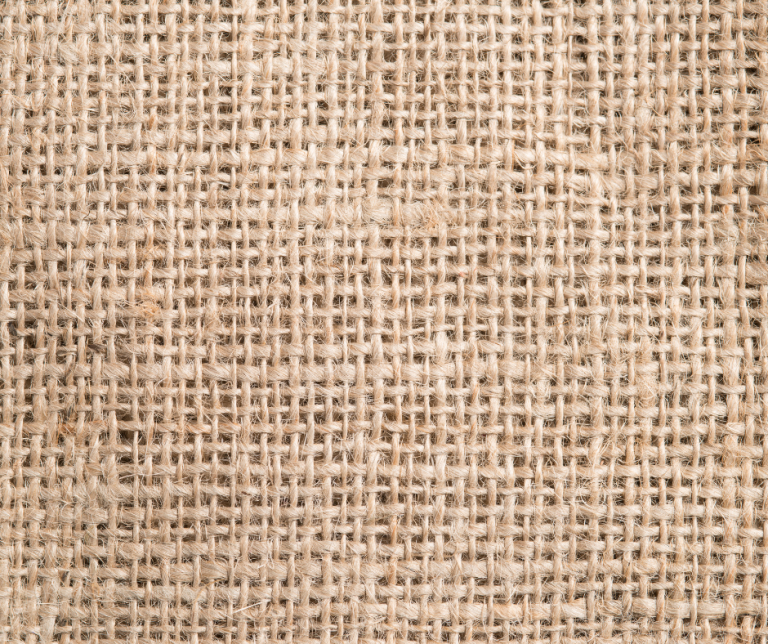
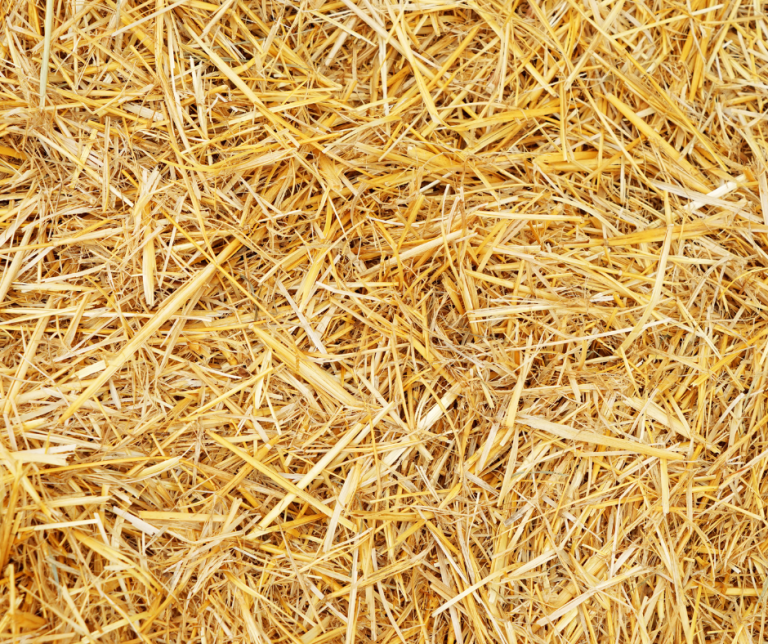
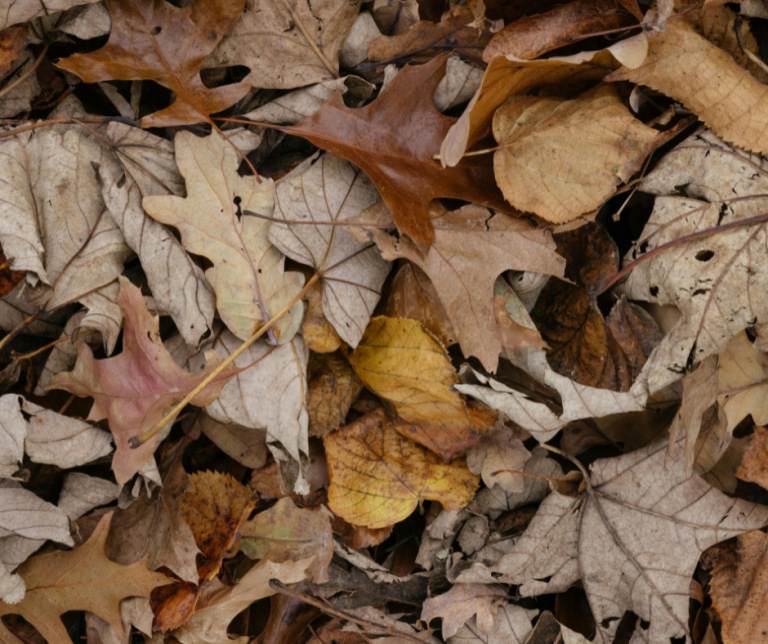
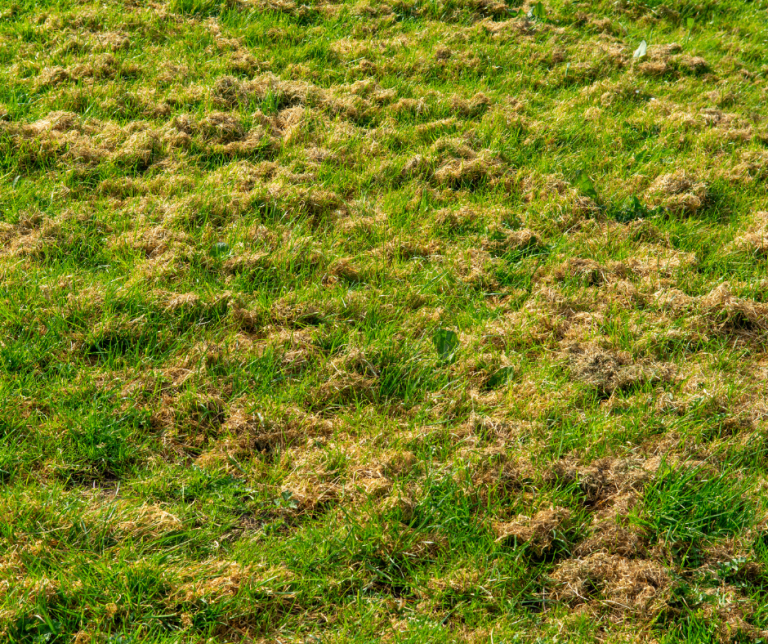
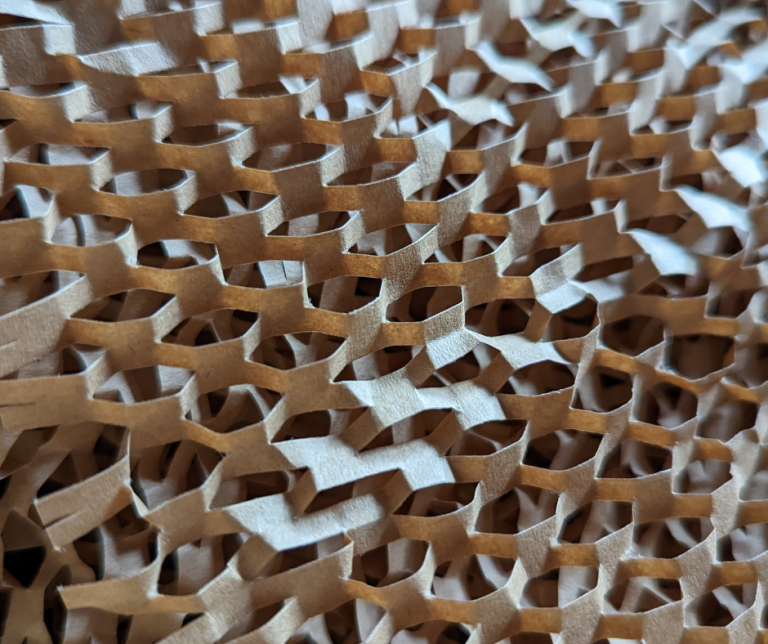
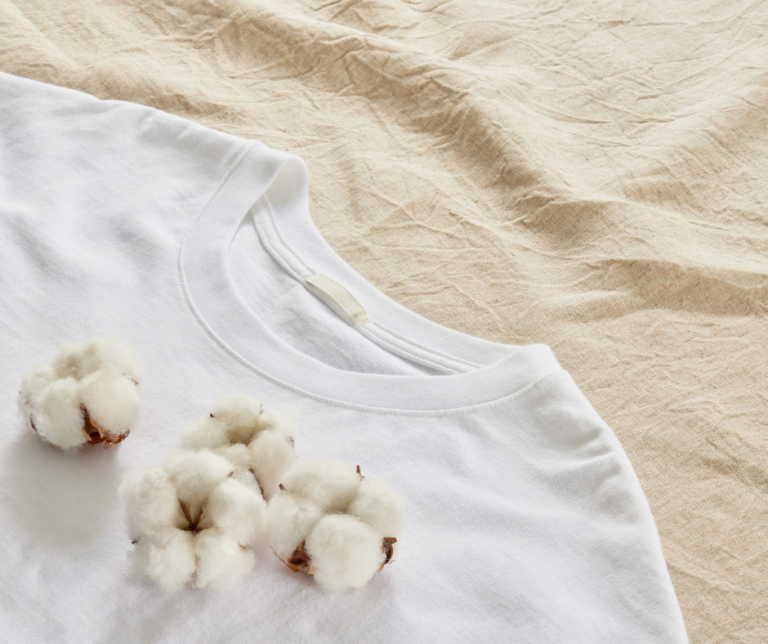

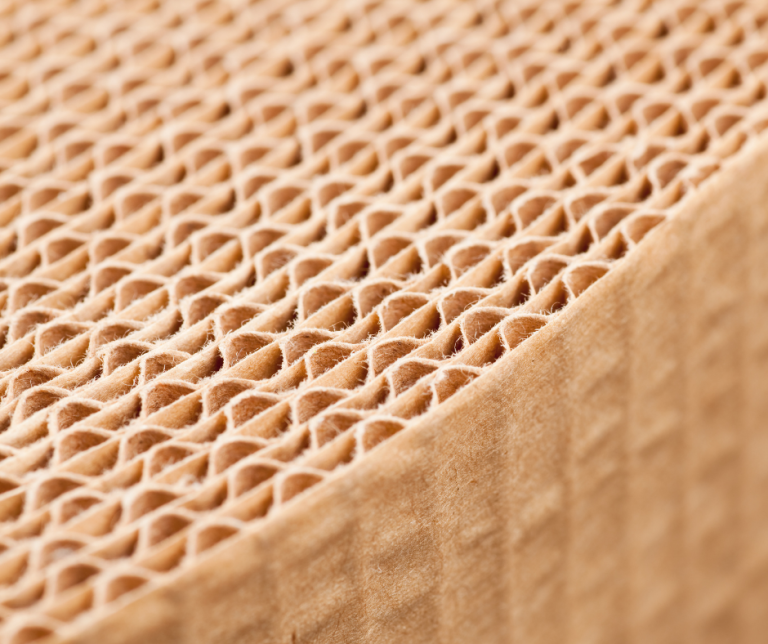
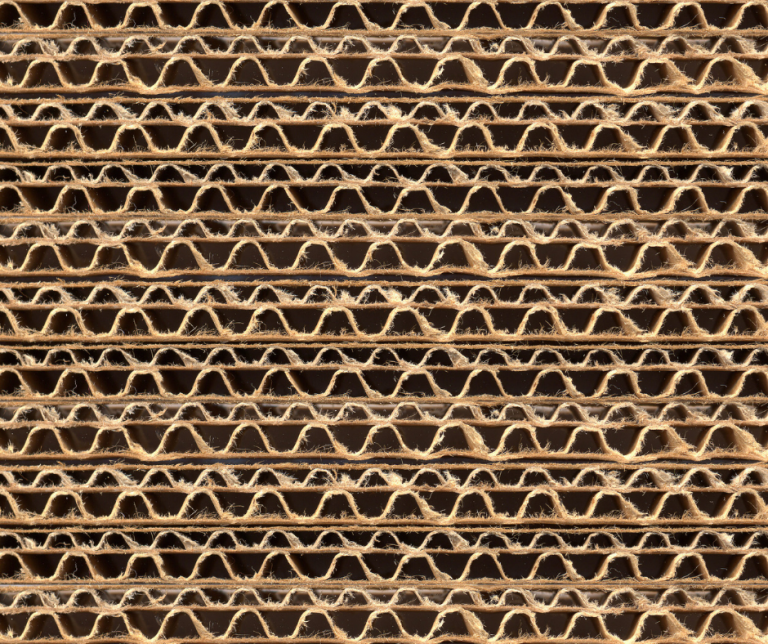
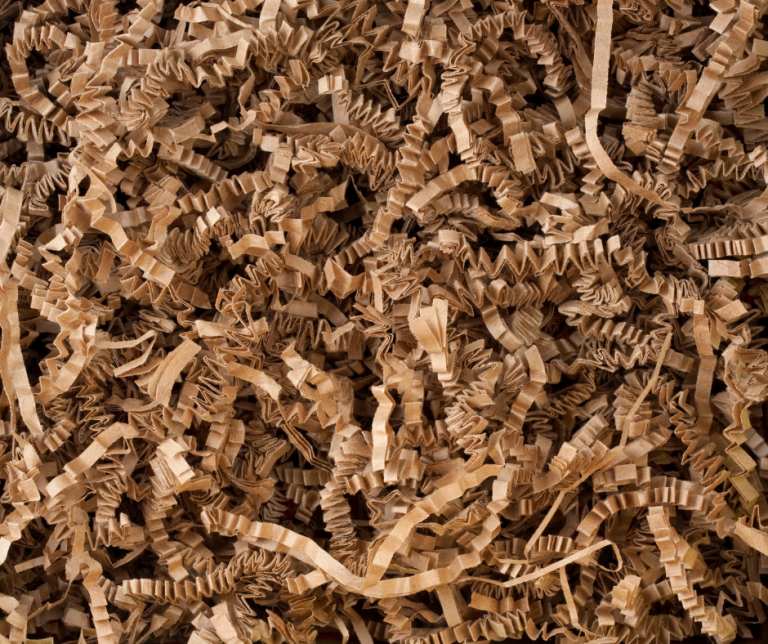

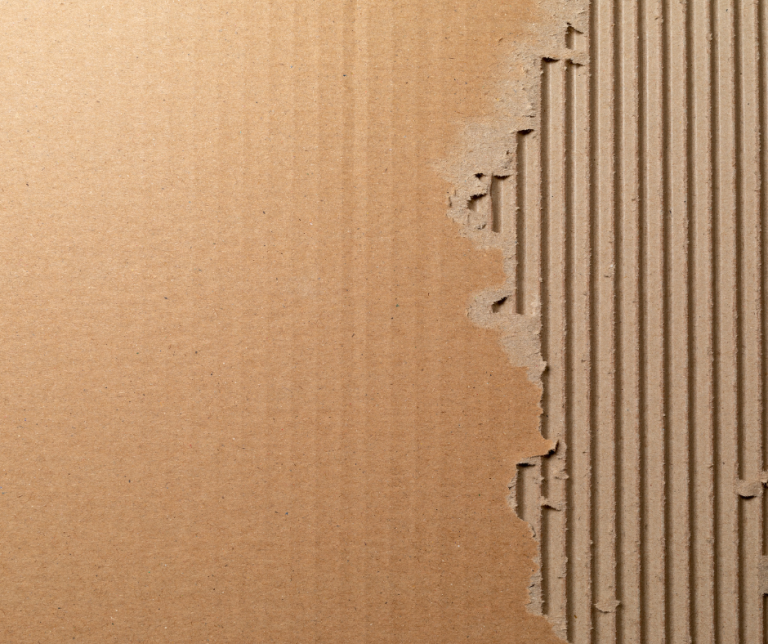
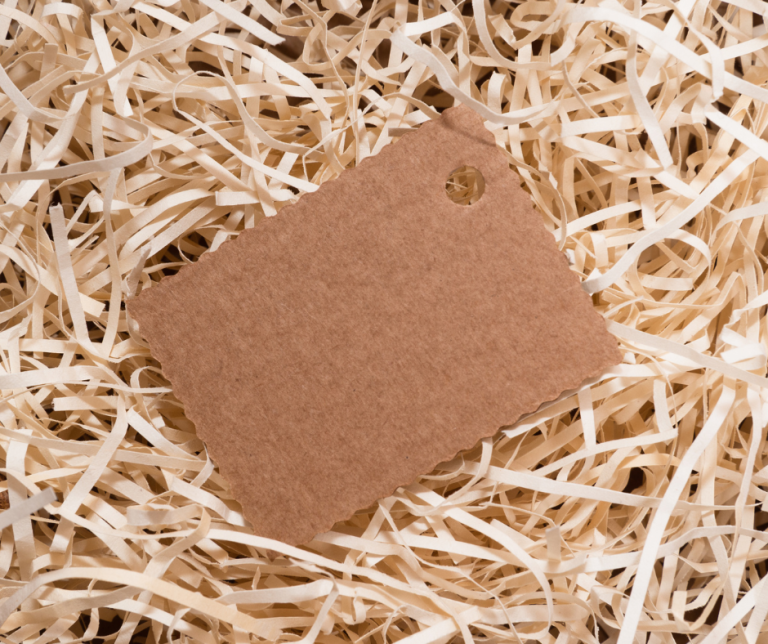
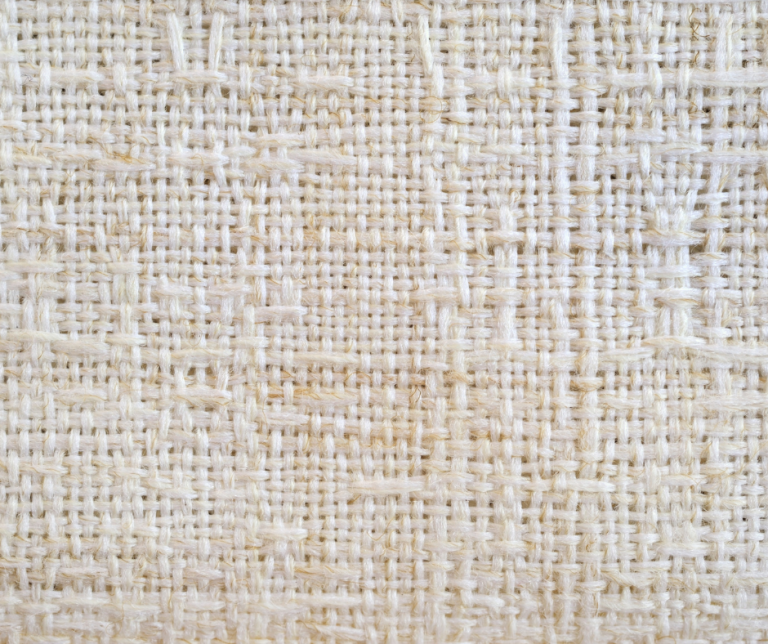
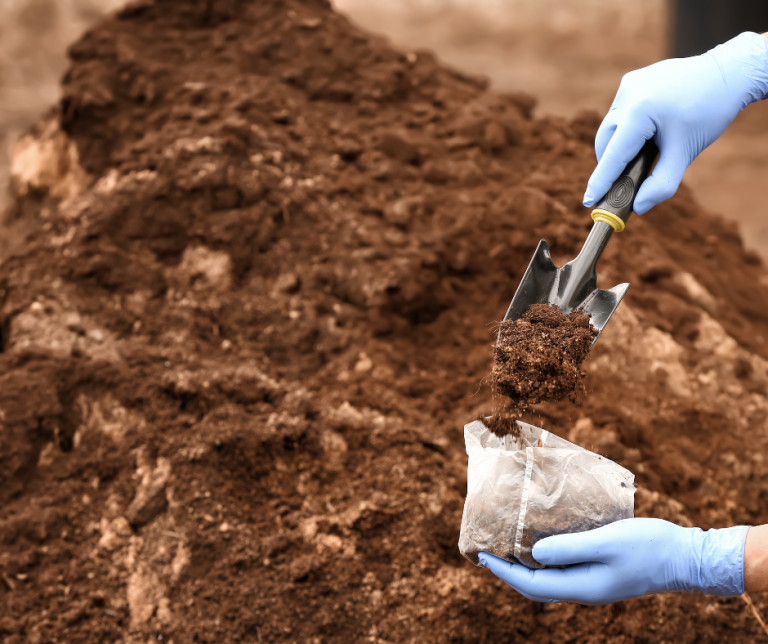
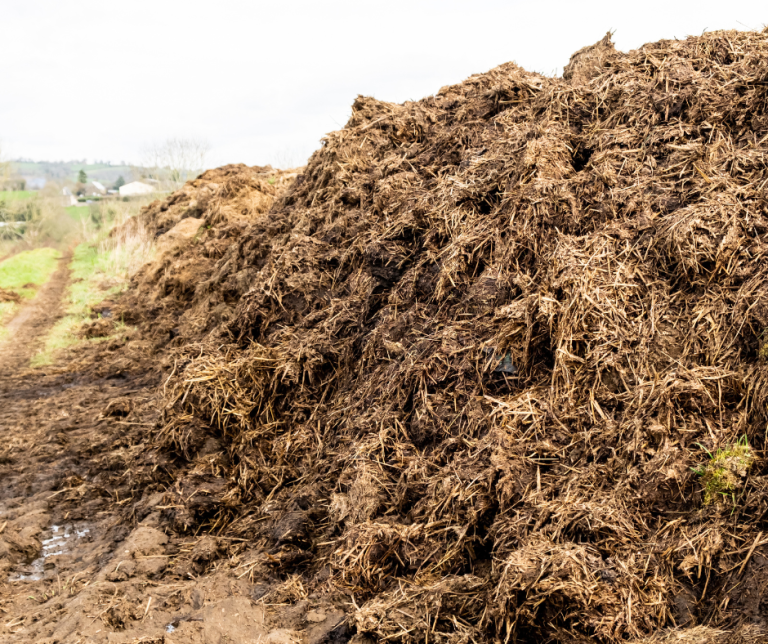
📦 Paper & Cardboard-Based
These carbon-rich materials are easy to source and break down well when shredded and moistened:
- Shredded newspaper (black- and-white only)
- Brown cardboard (egg cartons, boxes, loo rolls)
- Paper towels & napkins (unbleached, chemical-and food-free)
🍂 Natural & Garden Materials
These options add texture and microbial diversity, but require a bit more care:
- Dry shredded leaves
- Straw or hay
- Grass clippings (only if dried — fresh clippings can heat up and compact)
- Old mulch (if organic and broken down — avoid dyed or treated types)
- Finely chopped hedge clippings (dried, from soft, non-toxic plants like privet or box)
- Aged compost or manure (⚠️ Avoid fresh manure — it can harm your worms)
- Garden soil (small amounts only, to introduce soil microbes)
🧶 Fabric & Fibre
Soft, breathable fibres can help retain moisture and create a dark, worm-friendly environment:
- Cotton scraps or old T-shirts (undyed, natural fibres only – avoid synthetics)
- Burlap or hessian (uncoated & untreated)
- Natural fibre cloth (e.g. linen, muslin — avoid blends or printed fabrics)
🪱 Worm Comfort is Key
A mix of bedding materials creates the most comfortable, worm-friendly environment—balancing moisture, airflow, and microbial activity for healthy composting.
More detail on bedding types, preparation, and inoculation methods can be found in Section 6: Setting Up Your Vermicomposter.
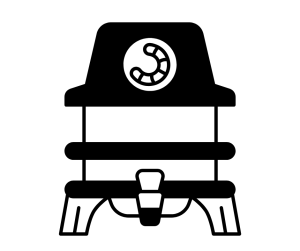
🪱 Prefer to Upcycle?
In Section 3, we’ll cover how to turn everyday containers into composting powerhouses—DIY worm bins are easier than you think.
Affiliate Disclosure: To keep this guide free and accessible, I use affiliate links where appropriate. If you make a purchase, I may earn a small commission—never influencing the price you pay. Every recommendation is based on hands-on experience or thorough research tailored to UK composting needs.

